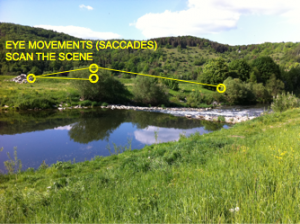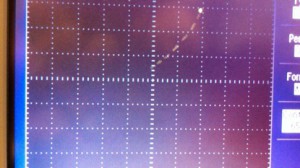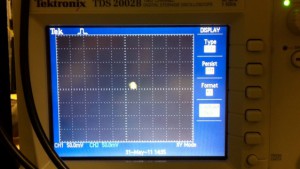The movie above (click on the right image) shows a real-time representation of the eye position of a subject scanning an image in front of him. The subject looks steadily for a while and then rapidly moves the eye to a new scene location, and so on. The rapid eye movements used repeatedly by the subject are called saccades, and they are used to scan scenes as shown in the schematic picture on the left.
The short intervals between saccades in the above movie are called “fixation intervals”, because the eye seems to be “fixed in position” during these intervals. However, careful inspection of eye position during such intervals reveals that the eye continues to move. For example, in the movie below, the subject was asked to maintain fixation at the center of the scene in front of him. We also magnified the zoom level on the representation of eye position in the movie so that tiny eye movements are visible. As can be seen, whenever the eye was putatively “fixating” the center, it was still continuously (and sub-consciously) moving with small amplitude movements. Often, these movements included rapid movements, just like the large saccades above but much smaller in amplitude. These small, rapid eye movements are called microsaccades.
Zoomed-in representation:



